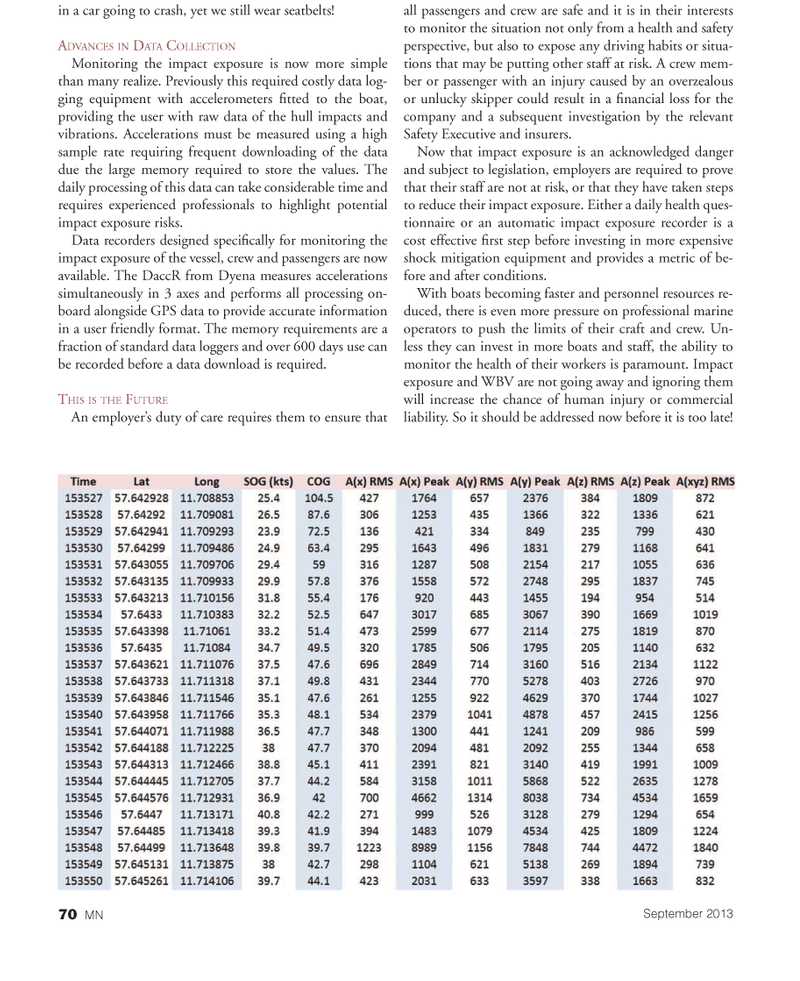
Page 70: of Marine News Magazine (September 2013)
Workboat Annual
Read this page in Pdf, Flash or Html5 edition of September 2013 Marine News Magazine
in a car going to crash, yet we still wear seatbelts! ADVANCES IN DATA COLLECTIONMonitoring the impact exposure is now more simple than many realize. Previously this required costly data log- ging equipment with accelerometers ? tted to the boat, providing the user with raw data of the hull impacts and vibrations. Accelerations must be measured using a high sample rate requiring frequent downloading of the data due the large memory required to store the values. The daily processing of this data can take considerable time and requires experienced professionals to highlight potential impact exposure risks. Data recorders designed speci? cally for monitoring the impact exposure of the vessel, crew and passengers are now available. The DaccR from Dyena measures accelerations simultaneously in 3 axes and performs all processing on- board alongside GPS data to provide accurate information in a user friendly format. The memory requirements are a fraction of standard data loggers and over 600 days use can be recorded before a data download is required. THIS IS THE FUTUREAn employers duty of care requires them to ensure that all passengers and crew are safe and it is in their interests to monitor the situation not only from a health and safety perspective, but also to expose any driving habits or situa- tions that may be putting other staff at risk. A crew mem- ber or passenger with an injury caused by an overzealous or unlucky skipper could result in a ? nancial loss for the company and a subsequent investigation by the relevant Safety Executive and insurers. Now that impact exposure is an acknowledged danger and subject to legislation, employers are required to prove that their staff are not at risk, or that they have taken steps to reduce their impact exposure. Either a daily health ques- tionnaire or an automatic impact exposure recorder is a cost effective ? rst step before investing in more expensive shock mitigation equipment and provides a metric of be- fore and after conditions. With boats becoming faster and personnel resources re- duced, there is even more pressure on professional marine operators to push the limits of their craft and crew. Un- less they can invest in more boats and staff, the ability to monitor the health of their workers is paramount. Impact exposure and WBV are not going away and ignoring them will increase the chance of human injury or commercial liability. So it should be addressed now before it is too late! September 201370 MNMN Sept2013 Layout 66-81.indd 708/29/2013 5:19:29 PM

 69
69

 71
71
